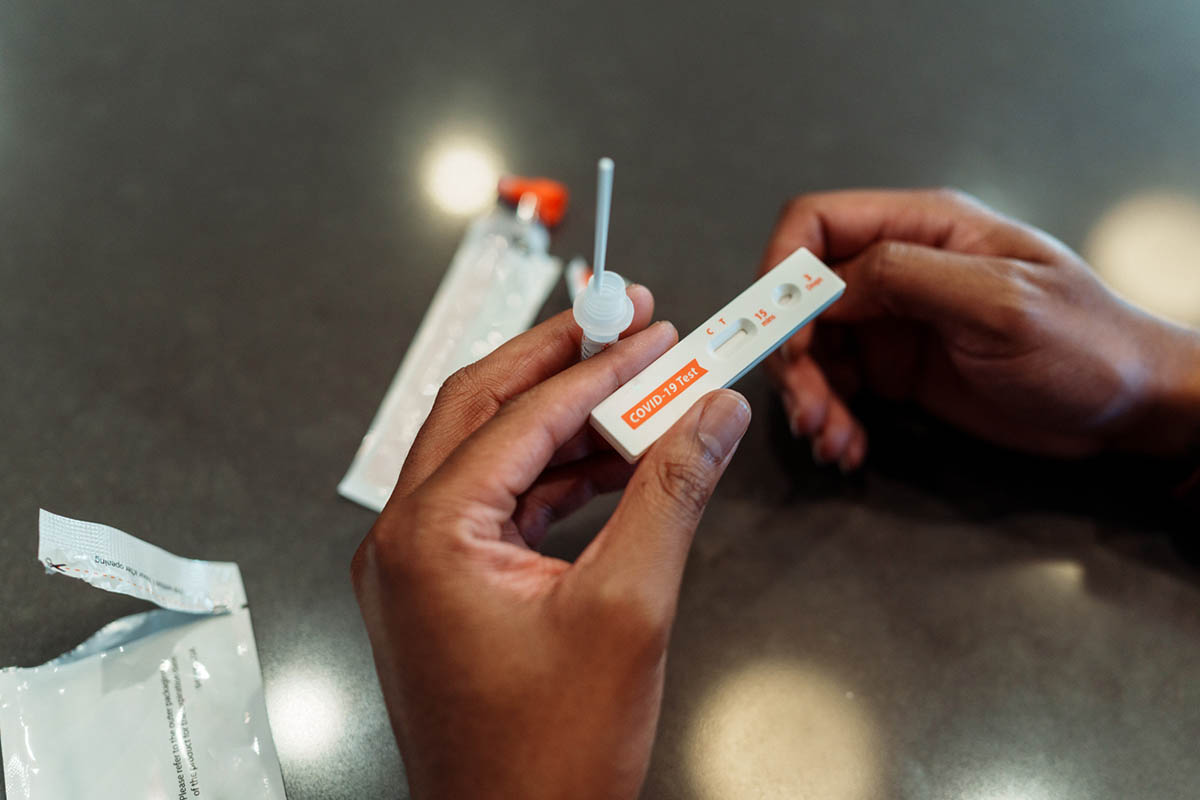Prim Care Companion CNS Disord 2023;25(2):22cr03397
To cite: Mendez MF. Palinacousis or auditory perseverations following COVID-19 vaccination. Prim Care Companion CNS Disord. 2023;25(2):22cr03397.
To share: https://doi.org/10.4088/PCC.22cr03397
© 2023 Physicians Postgraduate Press, Inc.
aDepartments of Neurology and Psychiatry and Behavioral Sciences, David Geffen School of Medicine, University of California Los Angeles (UCLA), Los Angeles, California
bNeurology Service, Neurobehavior Unit, VA Greater Los Angeles Healthcare System, Los Angeles, California
*Corresponding author: Mario F. Mendez, MD, PhD, Neurobehavior Unit, VA Greater Los Angeles Healthcare System, 11301 Wilshire Blvd, Los Angeles, CA 90073 ([email protected]).
See letter by Kleebayoon and Viroj Wiwanitkit
Clinicians must distinguish neurobehavioral symptoms from psychiatric symptoms such as auditory hallucinations and obsessional thoughts. One neurobehavioral symptom is palinacousis, a rare auditory illusion manifest as persistence or repetition of sounds.1 This report describes palinacousis occurring in a patient after vaccination for coronavirus disease 2019 (COVID-19).
Case Report
A 74-year-old man complained of mental repetition after receiving a second dose of the Moderna COVID-19 vaccine. Three days after his first dose, he had a severe headache and confusion, resulting in a visit to the emergency department. Despite this reaction to his first vaccination, he elected to proceed with the second dose a month later. Seven days afterward, he began experiencing echoing of the last word of anything said, heard, or even thought. The repetition sounded like his own voice repeating back to him and was not lateralized to either ear but located diffusely in his head. This experience was very annoying and disruptive, interfering with his ability to separate his words and thoughts from the echoing. He tried to cope by making music of the words or drowning out the repetition with music, white noise, or being around multiple people talking.
On evaluation, there were no signs of psychotic distortion of reality or thought content, evidence of compulsive or repetitive behavior, or history of related psychiatric disorders. Medical history included years of treatment with tyrosine kinase inhibitors for gastrointestinal stomal cancer, prior prostatic cancer resection, and a history of a subdural hematoma in his 20s with a residual craniotomy plate. On examination he was alert, well appearing, and cooperative with no evidence of delirium. His speech and language were normal and his thought processes linear. The patient’s general and neurologic examinations were otherwise unremarkable. Routine laboratory values were within normal limits except for slight anemia and slightly low sodium. Magnetic resonance imaging of the brain showed mild small vessel ischemic changes but no evidence of an acute intracranial process. A 4-hour electroencephalographic recording was normal and without epileptiform activity. The patient’s palinacousis gradually faded over several months.
Discussion
The patient had palinacousis with repeated echoing of last words or sentence fragments, rather than psychiatric symptoms of inner voices or recurrent, intrusive, and unwanted thoughts. An external auditory stimulus usually triggers the palinacousis, although, like this patient, one’s own inner speech can trigger it as well.1,2 Patients can localize the repetition to the contralateral ear and even orient in that direction,1,3 and they generally experience it as irritating and distracting, resulting in efforts to block it out. Palinacousis can occur as focal seizures with or without impaired awareness or as part of the postictal period, with localization most commonly in the superior temporal gyrus, mostly on the right.1,4,5 However, it has also occurred from right parietal intracranial hemorrhage.6 The phenomenon of palinacousis suggests the presence of a word sound buffer for recently heard speech, including recent thoughts experienced as inner speech.
Neurologic effects from COVID-19 vaccination, although rare, can include a wide range of conditions. These conditions include cerebral venous sinus thrombosis, Guillain-Barre syndrome, central nervous system demyelinating disorders, and Bell’s palsy.7,8 There are also reports of hyperactive encephalopathy after the Moderna and AstraZenica vaccines,9–11 but those patients had delirium with possible nonconvulsive status epilepticus or elevated cytokines (cytokine storm–associated encephalopathy), which were not measured in this patient.10,11 Headache is common with COVID-19 and can occur after vaccination, possibly due to multifactorial reasons or activation of trigeminal nerve endings.12 In addition to these neurologic effects, clinicians may need to consider auditory illusions as another potential post-vaccination reaction in those receiving COVID-19 vaccines.
Published online: March 7, 2023.
Relevant financial relationships: None.
Funding/support: Support provided by US National Institute on Aging Grant 1RF1AG050967.
Role of the sponsor: The funding sponsor provided support for the author in preparation of the report as part of a larger research project.
Patient consent: Consent was received from the patient to publish the case report, and information has been de-identified to protect anonymity.
References (12)

- Fields MC, Marcuse LV, Yoo JY, et al. Palinacousis, palinacousis: seven new cases. J Clin Neurophysiol. 2018;35(2):173–176. PubMed CrossRef
- Magnin E, Ryff I, Hague S, et al. A new symptom, “palinendophonia,” associated with pure verbal palinacousis induced by a right inferior temporal lesion. Eur Neurol. 2015;74(3-4):219–221. PubMed CrossRef
- Veilleux C, El-Hage G, L’Ecuyer N, et al. Palinacousis: an eloquent symptom of temporal lobe lesion. BMJ Case Rep. 2021;14(4):e236615. PubMed CrossRef
- Park SH, Kim KK. Palinacousis-auditory perseveration. J Epilepsy Res. 2017;7(1):57–59. PubMed CrossRef
- Mohamed W, Ahuja N, Shah A. Palinacousis–evidence to suggest a post-ictal phenomenon. J Neurol Sci. 2012;317(1-2):6–12. PubMed CrossRef
- Rosenberg D, Latorre JG. Hearing one’s voice in your speech: an unusual case of palinacousis due to acute intracerebral hemorrhage. Neurologist. 2016;21(1):13–15. PubMed CrossRef
- Sriwastava S, Sharma K, Khalid SH, et al. COVID-19 vaccination and neurological manifestations: a review of case reports and case series. Brain Sci. 2022;12(3):407. PubMed CrossRef
- Garg RK, Paliwal VK. Spectrum of neurological complications following COVID-19 vaccination. Neurol Sci. 2022;43(1):3–40. PubMed CrossRef
- Liu BD, Ugolini C, Jha P. Two cases of post-Moderna COVID-19 vaccine encephalopathy associated with nonconvulsive status epilepticus. Cureus. 2021;13(7):e16172. PubMed CrossRef
- Al-Mashdali AF, Ata YM, Sadik N. Post-COVID-19 vaccine acute hyperactive encephalopathy with dramatic response to methylprednisolone: a case report. Ann Med Surg (Lond). 2021;69:102803. PubMed CrossRef
- Baldelli L, Amore G, Montini A, et al. Hyperacute reversible encephalopathy related to cytokine storm following COVID-19 vaccine. J Neuroimmunol. 2021;358:577661. PubMed CrossRef
- Mutiawati E, Syahrul S, Fahriani M, et al. Global prevalence and pathogenesis of headache in COVID-19: a systematic review and meta-analysis. F1000 Res. 2020;9:1316. PubMed CrossRef
Please sign in or purchase this PDF for $40.




